
In this second of six resources on Shakespeare’s Macbeth, children are invited to look closely at the witches and the role they play in the story.
The aim of this session is to build on the charcoal skills used in session one, and use further skills in paper manipulation/construction to create an imagined costume cape for the witches.
Back to all six sessions here.
Session Two: The witches
Warm Up: Approx 15 minutes
Main Activity: 45 minutes
Materials needed: Cartridge and sugar paper, newsprint, charcoal, pencils, coloured pastels, coloured chalks, wax crayons, fabric scraps, masking tape or glue, garden twine/embroidery thread and embroidery needles (if available)
Focus Theme/s: Appearances Vs Reality, The Supernatural
Time to Warm Up! Building layers of drawing materials and observing fabric.
Using what you’ve learnt from session 1 about using two materials together (charcoal and pencil) we’re going to do the same but adding in some new materials. We’re also going to learn a bit about observational drawing.
Take some scraps of fabric. Cotton, calico, and other natural fabrics work best for this. Tear and shred the fabric to ‘distress’ it. You can use scissors for this, or perhaps your hands. Then, either hang the fabric up so you can see it, or have some in front of you on the table. Take some paper and a drawing pencil. Look closely at the folds and draping of the fabric, observe the tonal changes where the fold catches the light or casts a shadow. What effect do the tears and distressed look have?
Begin to draw what you see.
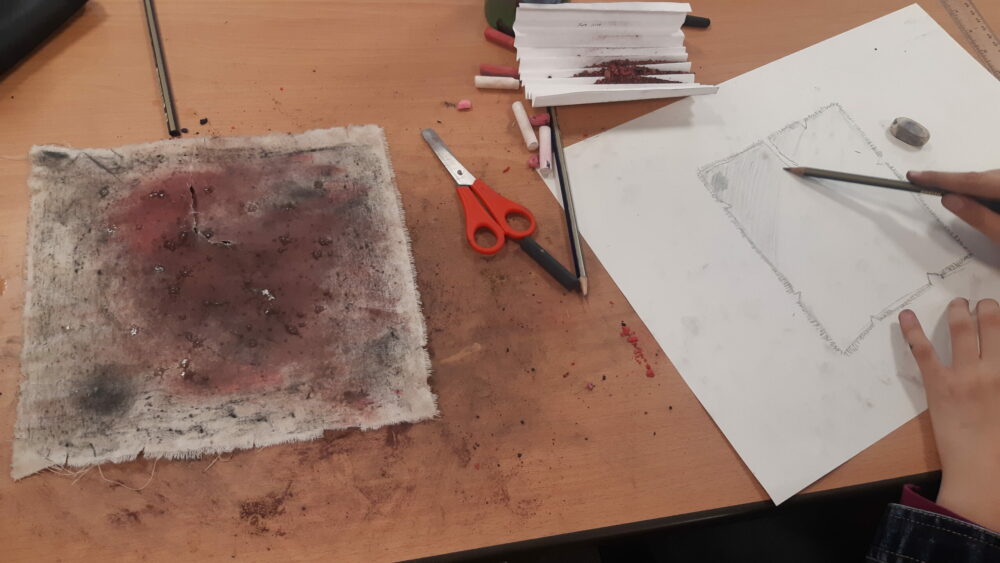
This doesn’t need to fill the white paper. You may prefer to start small and work up to a bigger drawing. You may want to ‘zoom’ in on tiny details and make a series of small sketches.
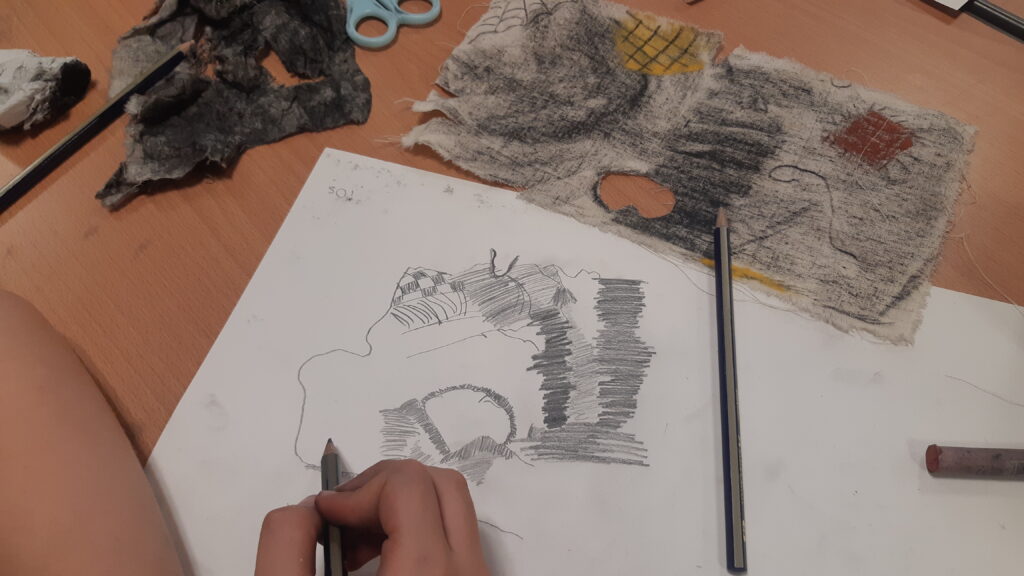
Once you have worked on the sketches with the pencils, choose another material. Let’s see what pastels and chalk can do. Can you shade in some shadow? Can you use pale colours to highlight the lighter areas?
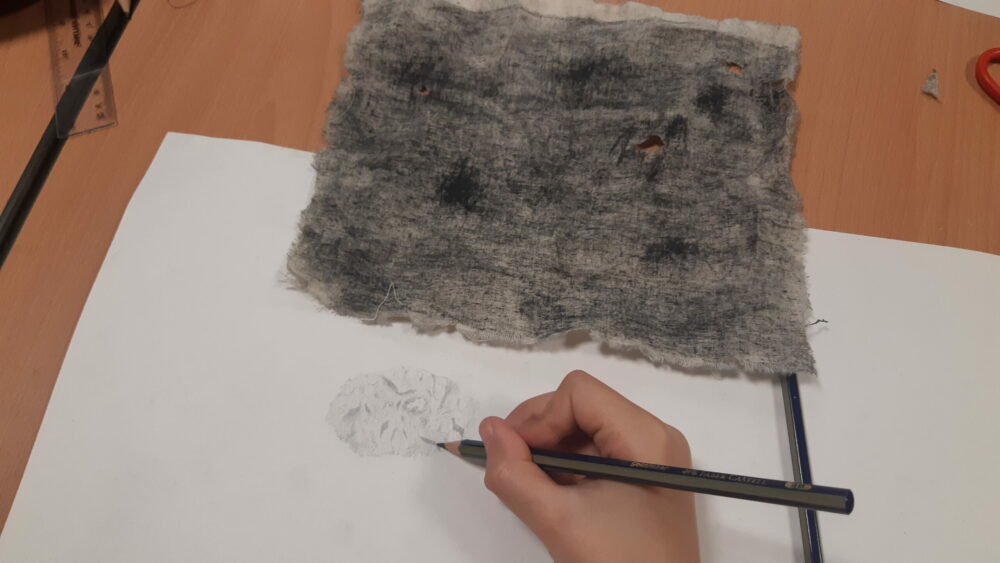
Choose another material. What happens when you work this into your drawings? Does anything happen to the paper? How about wax crayons? They create a particular kind of surface on paper – can you draw over this or does it resist?
Keep the fabric to hand as you will need this in the main activity.
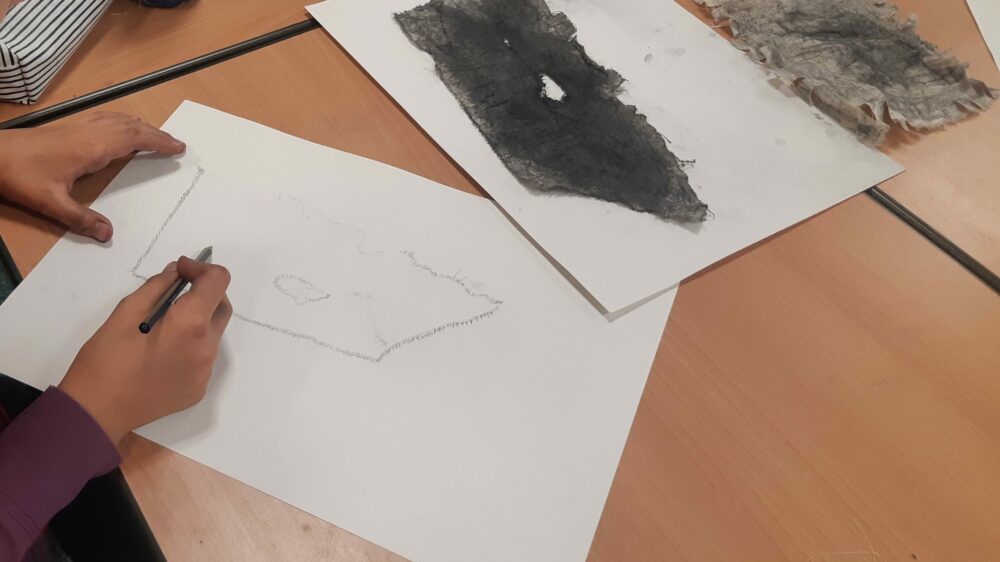
Starter Discussion:
In the play Macbeth, appearances are not quite what they seem. When Macbeth and Banquo, returning from battle, meet the witches on the heath Banquo is shocked at their appearance and wonders who they could be.
‘…What are these,
So wither’d, and so wild in their attire,
That look not like the inhabitants o’ the earth,
And yet are on ‘it? – Live you? Or are you aught
That man may question? You seem to understand me,
By each at once her chappy finger laying
Upon her skinny lips: – you should be women,
And yet your beards forbid me to interpret
That you are so’
(Act 1 Scene 3)
What images of the witches’ appearance are conjured by this description? How can we tell they are forces of evil rather than forces of good? Banquo’s physical revulsion at the witches is clear. What do you think Macbeth’s reaction to them says about him?
‘Stay you imperfect speakers, tell me more’
(Act 1 Scene 3)
Why does Macbeth want to hear more of what the witches have to say?
Context:
The witches use words that have a double meaning to fool Macbeth.
Shakespeare’s audience would have been very scared of witches and evil spirits – and would have held fear of supernatural powers beyond the real world. The opening scenes that introduce us to them would have set the tone of what is yet to come.
Without the use of modern staging methods such as electric lighting or sound effects, Shakespearean actors would have relied more on their voice and movement as well as their costume. The sound of thunder was sometimes made by rolling stones over lead sheets!
Main Activity: Making a Witch’s Cape
We are going to look at how a character’s appearance can inform us of who they are as person, and how we can use drawing to communicate this understanding.
You’re going to create the effect of the ‘wither’d and wild’ clothing worn by the witches using paper and layers of drawing materials.
Step 1: First, take a large sheet of A2 cartridge or sugar paper and scrunch it up gently in your hands. Open it out again and repeat the process. Do this until the paper becomes softer and more mailable.
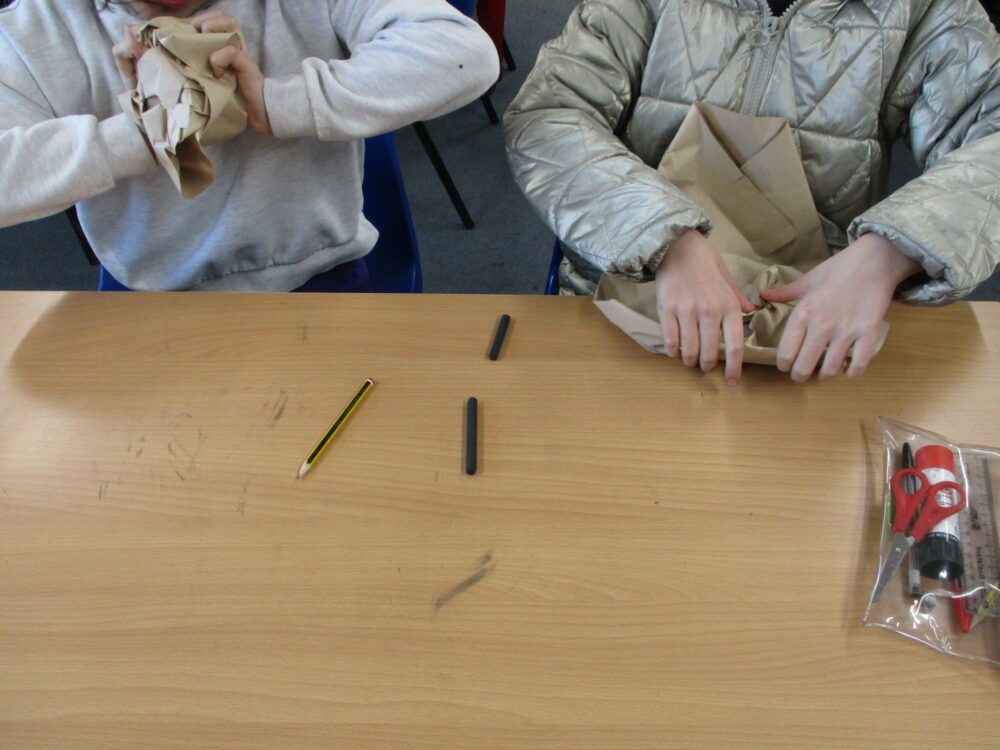
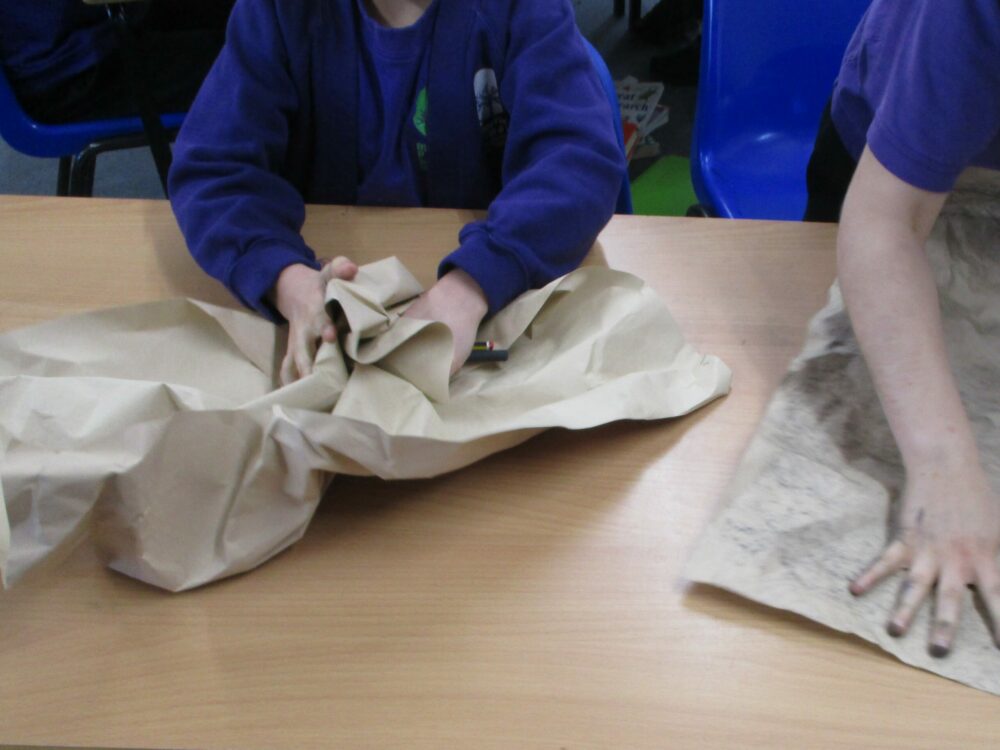
Smooth the paper out flat. Then, choose some drawing materials – charcoal, pastels, chalks, pencils etc. Imagine your paper is going to become withered fabric worn by the witches. Using what you leant in the warm up about building materials, begin to work into the paper.
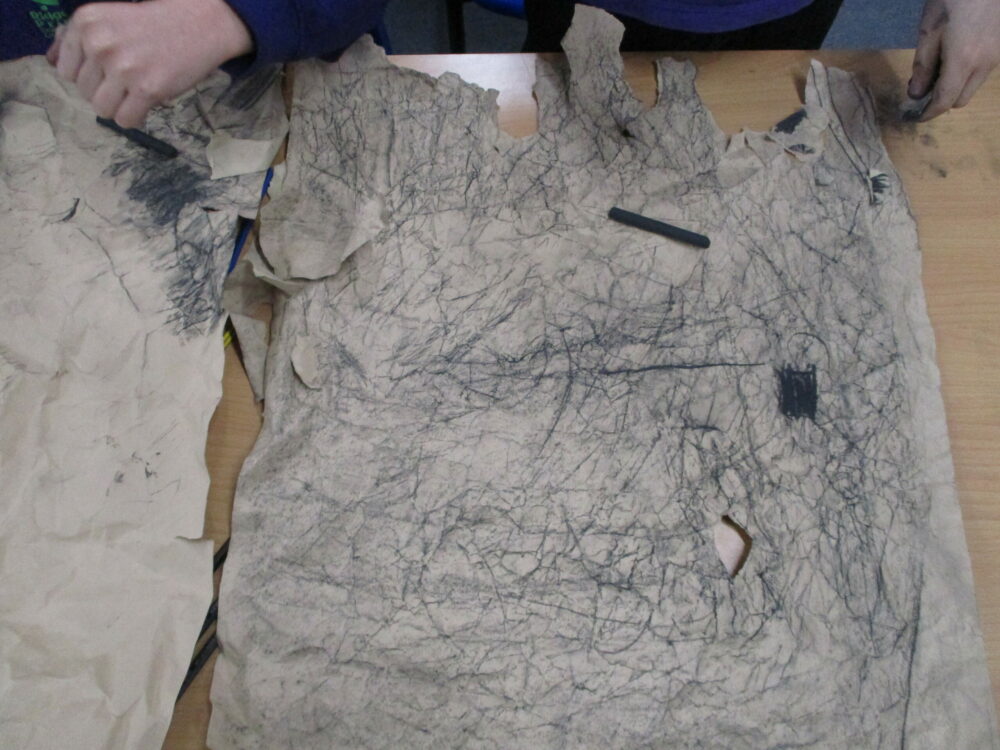
This time, you are not observing fabric while you draw – but taking the qualities of that fabric and creating your own impression of this using mark making on paper.
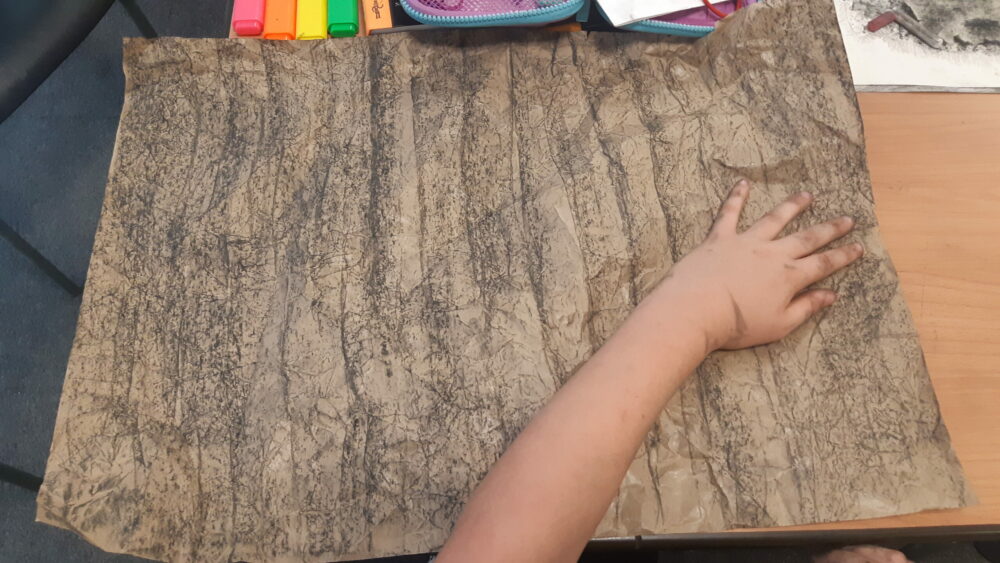
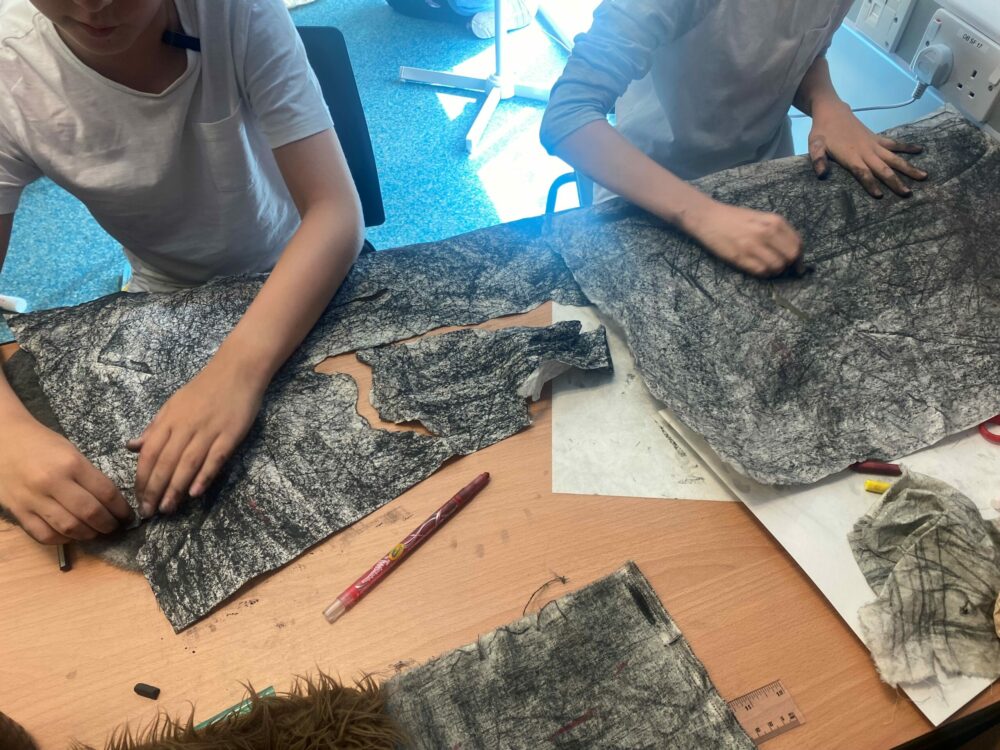
Think carefully about the colours. What colours do you associate with the witches? What colours communicate evil, death, destruction? Notice how the texture of the paper changes as you keep building the layers.
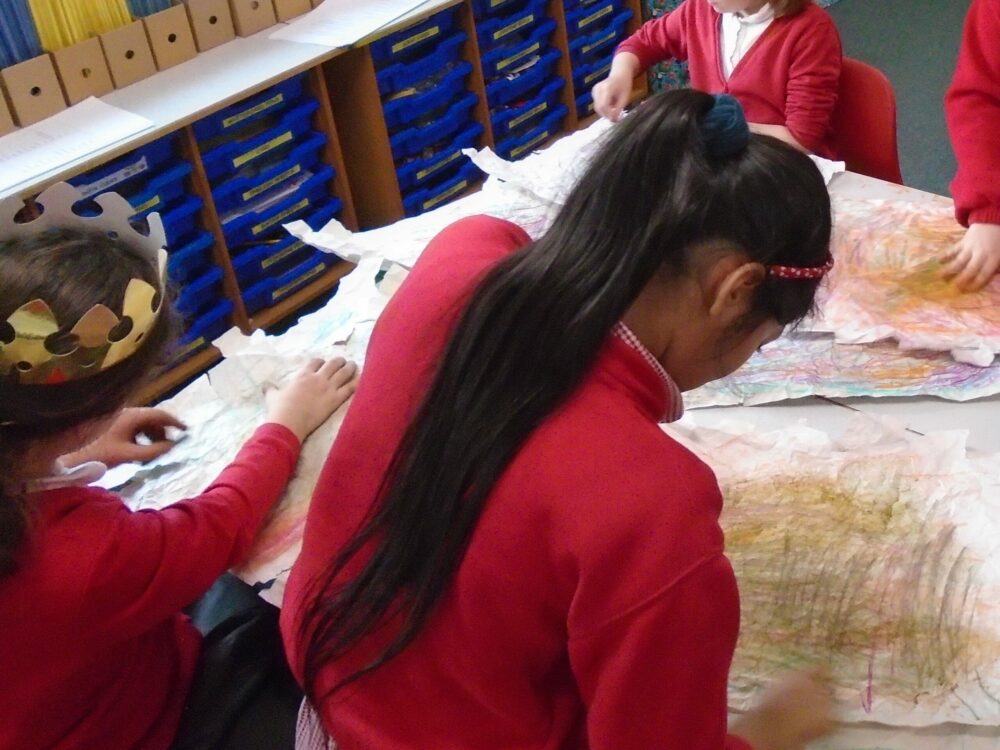
Take another piece of paper and repeat this process. Once you are happy with your layers, move onto Step 2.
Step 2: Starting on one longer edge, gently tear strips of the paper towards the middle. Stop at the middle and repeat, working your way along one edge and tearing at varying distances towards the middle.
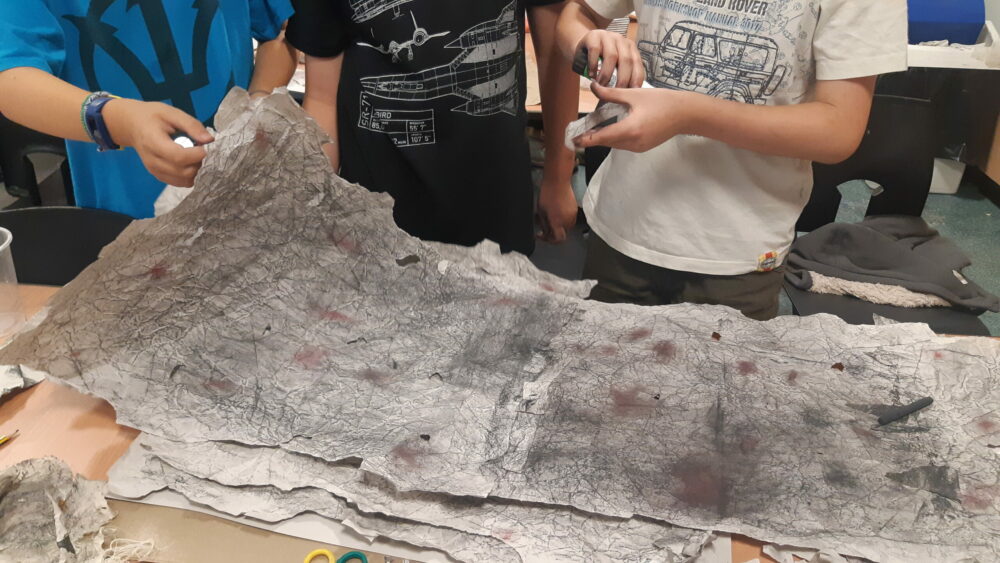
Try to make points in the loose/torn ends, rather than retaining the straight edges. Observe the distressed fabric from the warm up if it helps you develop your making.
Keep working into your two pieces of paper. Try not to rip it up completely – you should still be left with two single pieces of paper, albeit ripped and distressed.
If you think it needs it, work in some more drawing or painting materials.
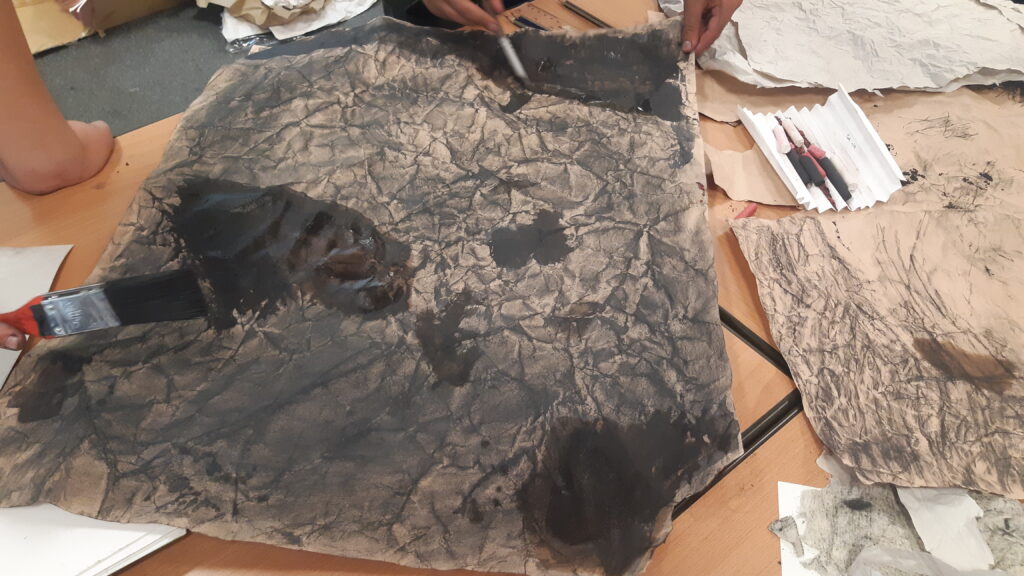
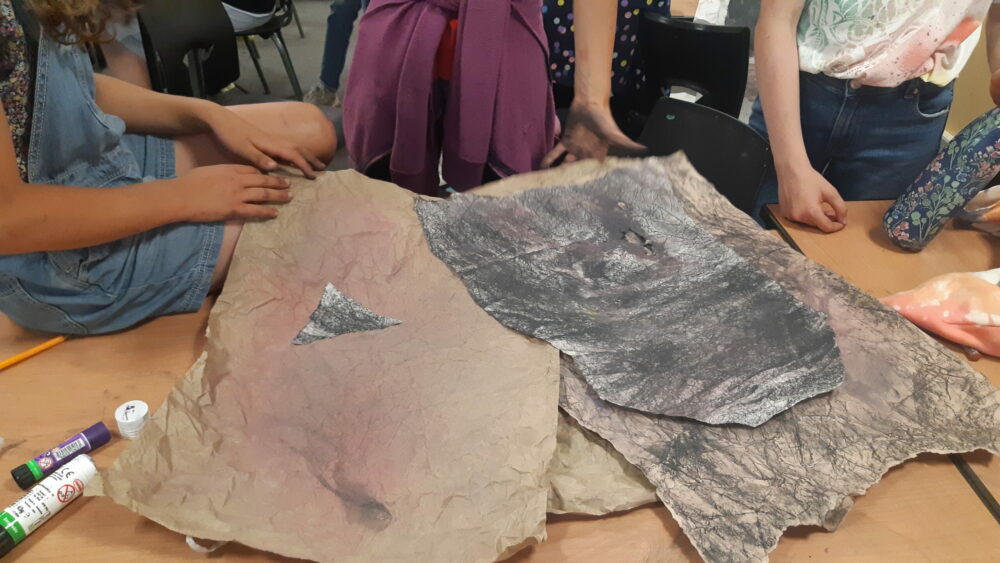
Layering both materials and the paper itself is key to making an effective cape. Hold your two pieces of torn paper over one another. You now need to attach them together. You can either do this by using masking tape (folding it on itself and taping to the underside so it’s not seen), or you can use needles and thread. You will need an embroidery thread and needle for this as regular cotton will be too thin.
If you are stitching, do a loose running stitch along the edge of your overlapped paper. Your cape should begin to form as you gather the paper together, moving it along the thread as you work. Once you have stitched to the end and gathered enough, tie a knot in the thread to secure it. If you are using tape, try and scrunch and overlap the paper as you stick it to create volume and texture.
Try it on for size over your shoulders. Trim, tear, fold and scrunch the paper until it feels right. Don’t worry if it falls apart a bit – embrace the withered nature of it!
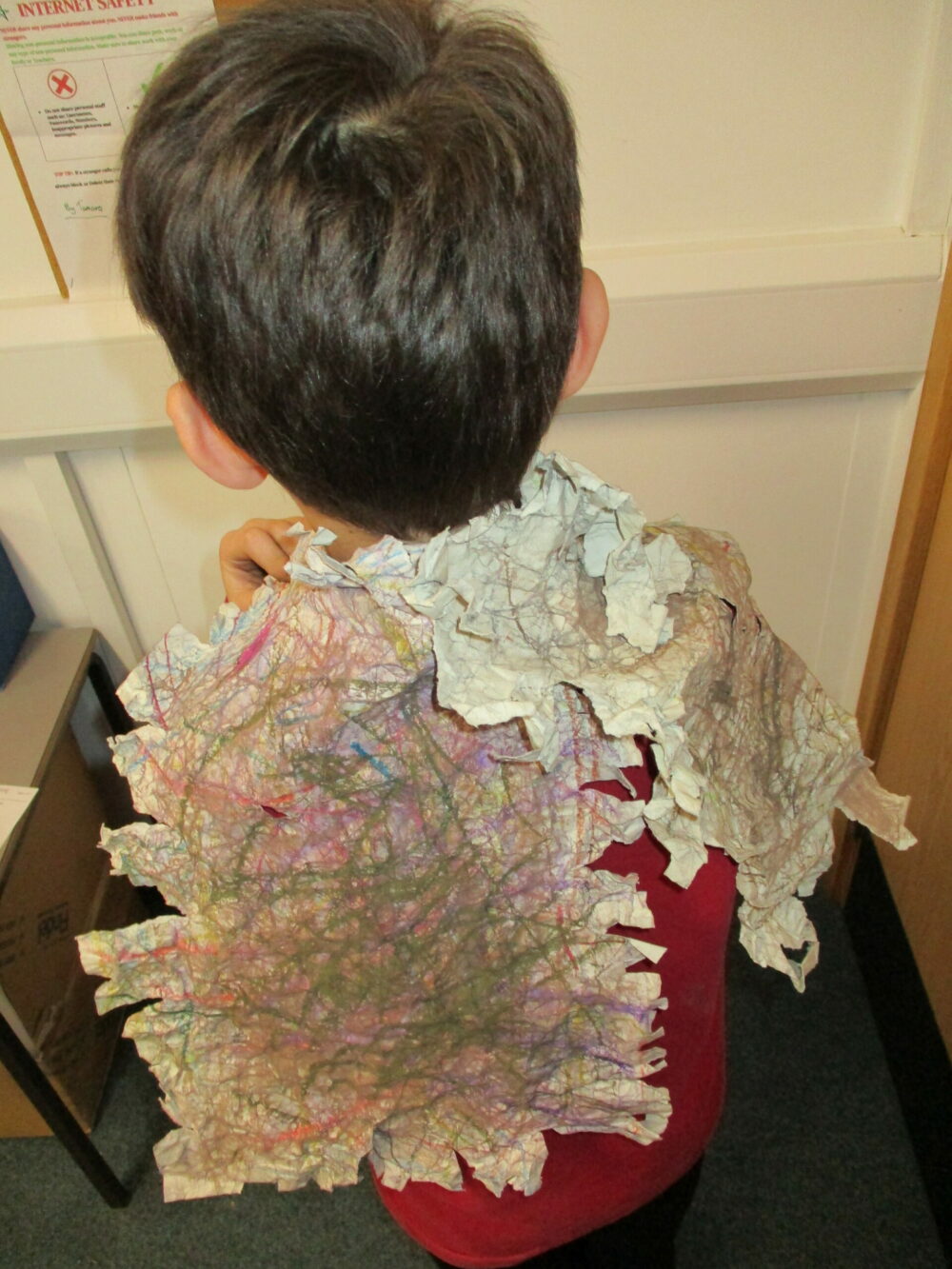
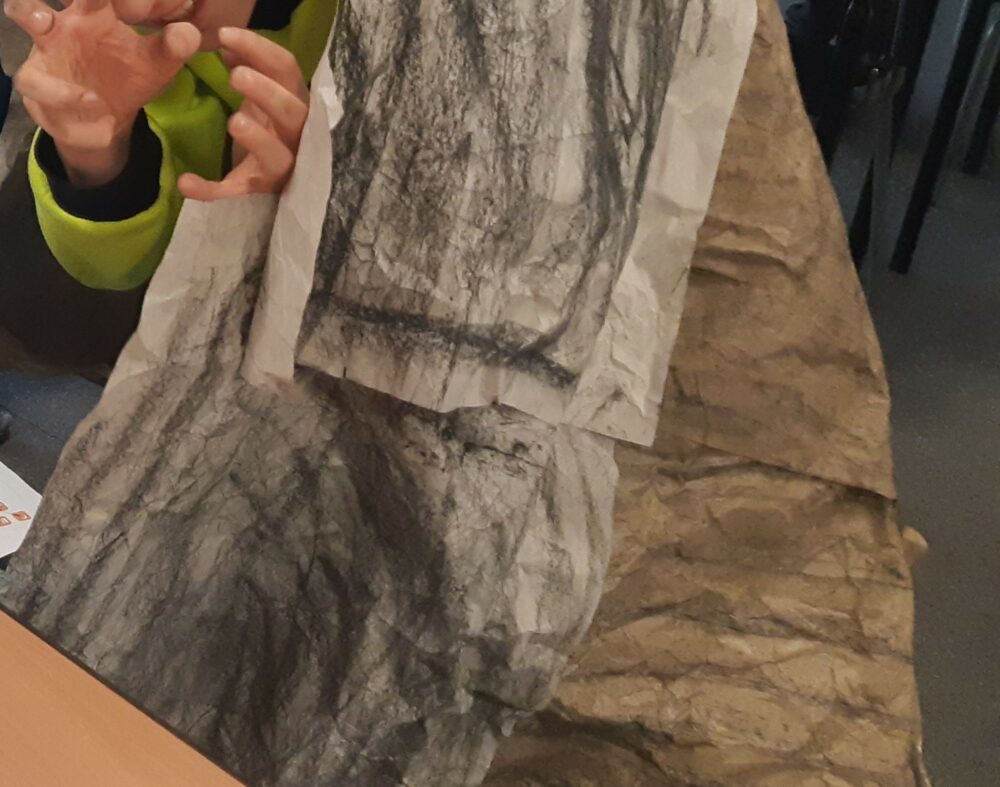
Keep trying them on as you make. Make your own creative choices on its appearances. Can any deeper colours enhance your cape?
The rhythm and rhyme of the witches’ lines sound like they are casting a spell. Try reading them out loud as you embody their character:
‘Fair is foul, and foul is fair:
Hover through the fog and filthy air’
Keep your capes safe as you’ll need them for session 3!
Reflection:
Pin the capes up or invite all the children to put them on.
Invite anyone who would like to, to show and talk about their cape.
Can you explain which drawing materials you used and what differing qualities they have? Which material did you prefer and why?
Can you think of some other ways to make a cape like this?
If you were an actor performing the role of one of the Witches in a production of Macbeth, how might wearing your withered cape help your performance?